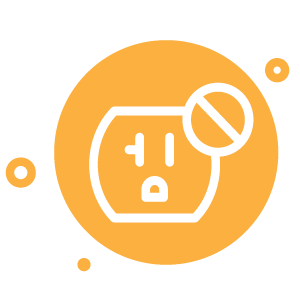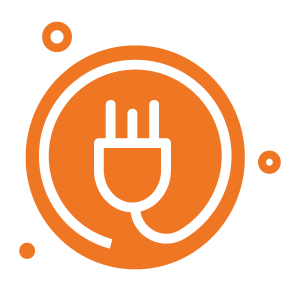Generator safety
Protect yourself • your neighbors • and our crews
Generators can come in handy if the power goes out during a storm. But it’s important to use them properly to keep yourself, your neighbors and our employees safe.
Always follow the manufacturer’s instructions when operating a generator to prevent injury, fire or carbon monoxide poisoning.
 Prevent backfeed
Prevent backfeed
Backfeed occurs when power is sent back through your home’s electrical lines in reverse, creating a dangerous level of electricity that puts our crews at risk of severe injury or death.
Permanent generators:
Make sure an electrician installs a power transfer switch before using a permanent generator. Transfer switches allow you to choose between utility power or backup generator power. Switches must be installed past the meter. No devices are allowed between the socket and the meter.
Portable generators:
Never connect generators directly to your home’s wiring or plug into a wall outlet. Consult with a licensed electrician before using.
 Portable generator safety tips
Portable generator safety tips
- Use a heavy-duty extension cord designed for outdoor use to connect appliances to the generator. Make sure the extension cord is free of cuts or tears and has a wattage rating that exceeds the total wattage of items plugged in.
- DO NOT plug a generator into a wall outlet, your home’s breaker panel or where electric service enters your house. This may bypass your home’s built-in circuit protection devices, puts your appliances and electronics at risk of damage, and puts our employees and your neighbors at risk of shock or electrocution.
- Follow safety guidelines when you handle and store generator fuel.
- More safety tips at www.esfi.org.

Carbon monoxide awareness
- Keep portable generators at least 20 ft. away from your home.
- Never operate a generator inside your home or in other enclosed or partially enclosed spaces, including garages.
- Always operate away from doors, windows and vents.
- Direct the exhaust away from your home.
- Symptoms of carbon monoxide poisoning include dizziness, headaches, nausea and fatigue.


